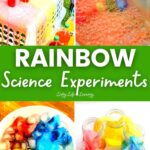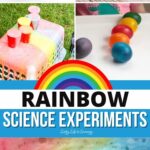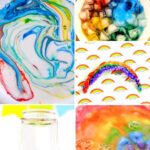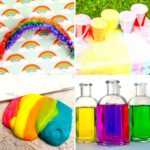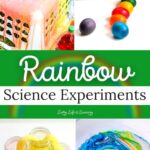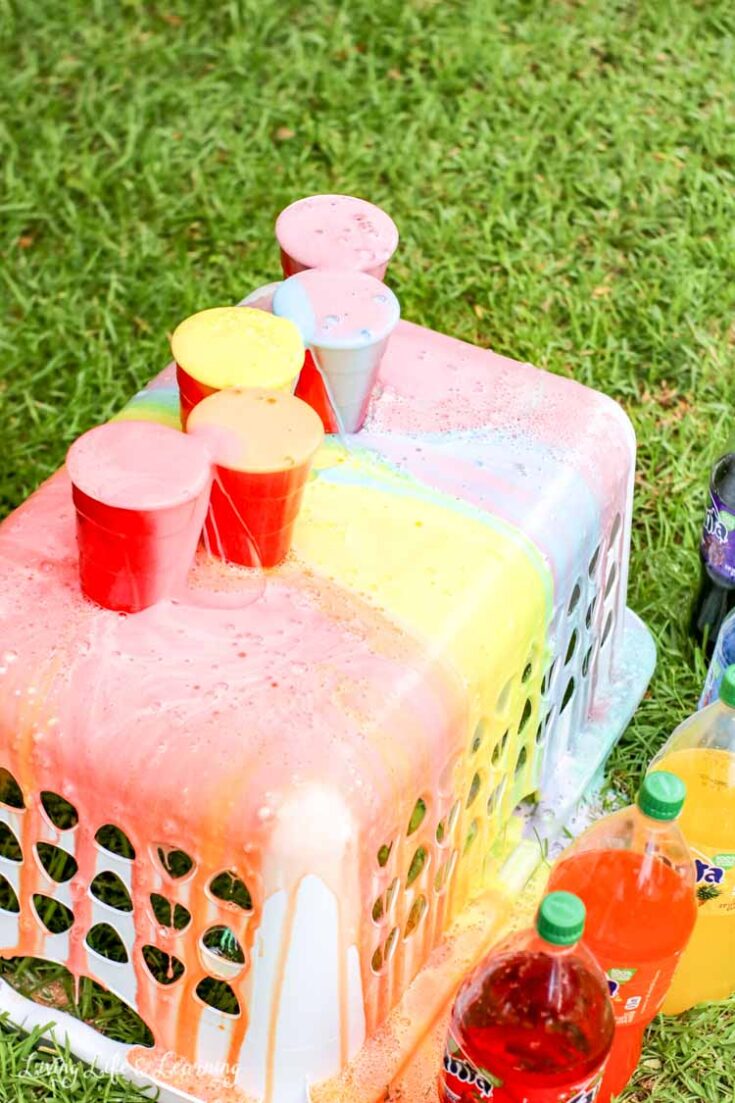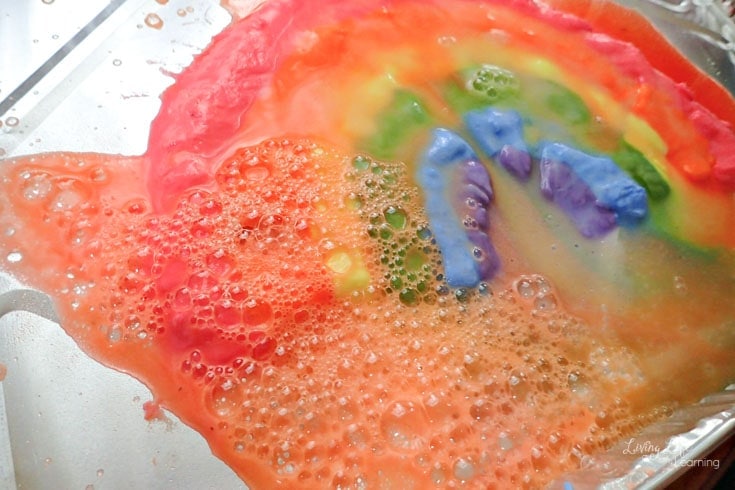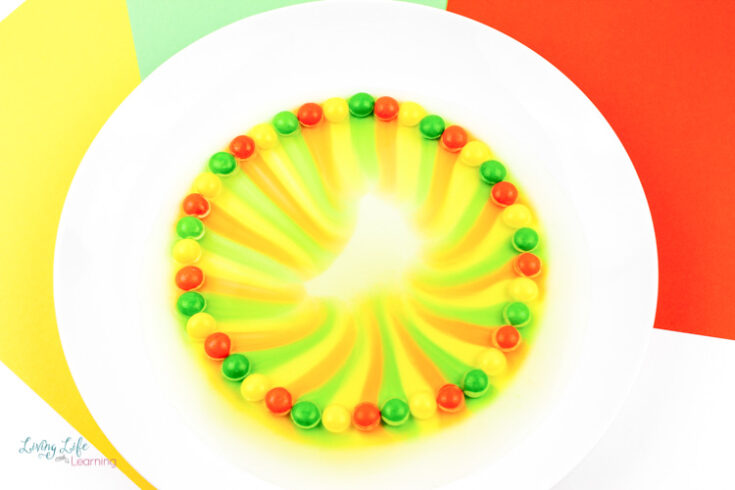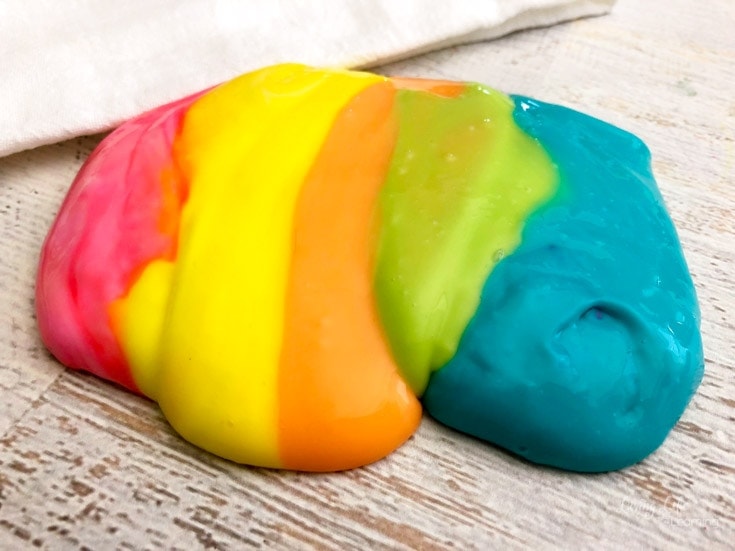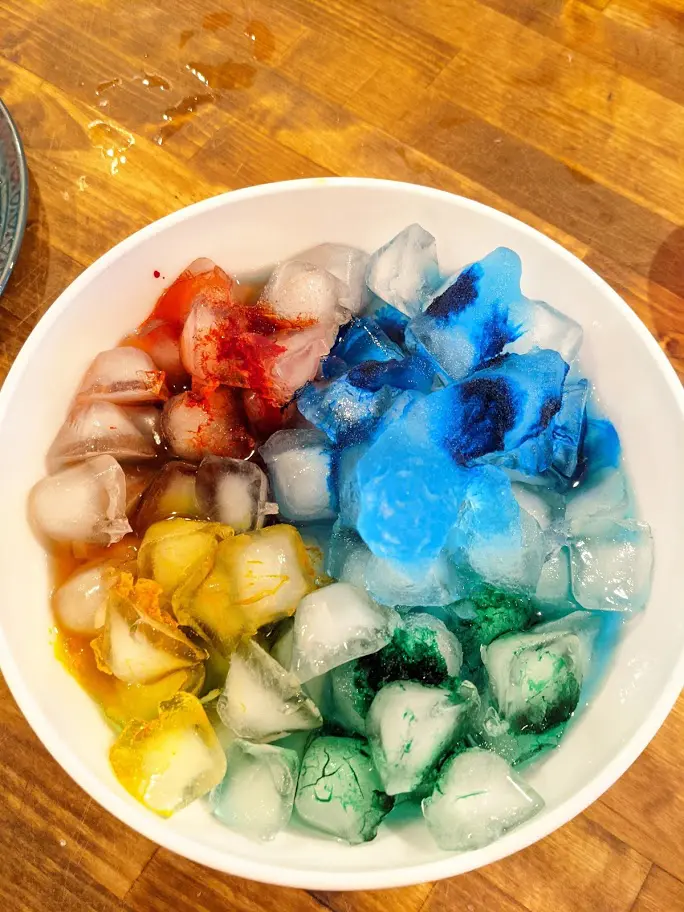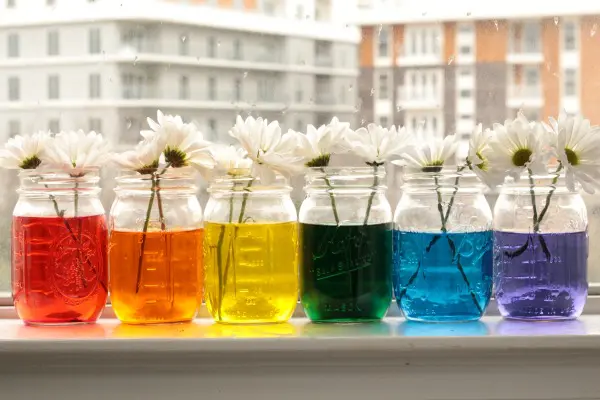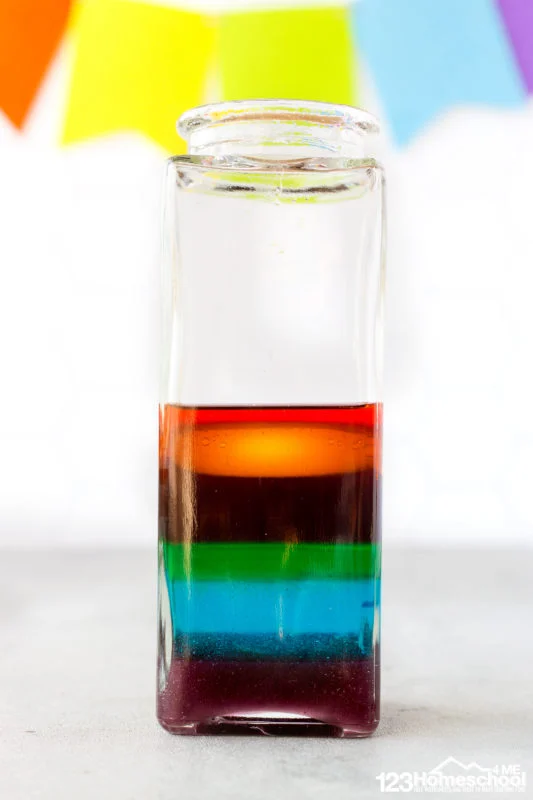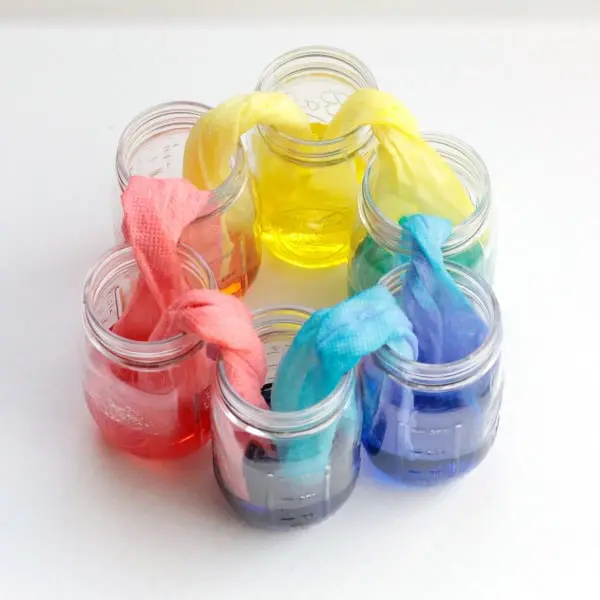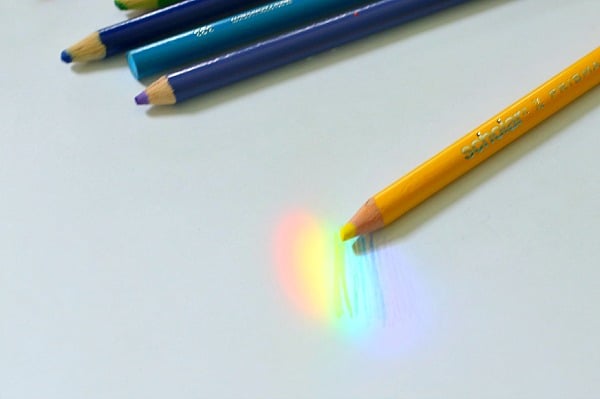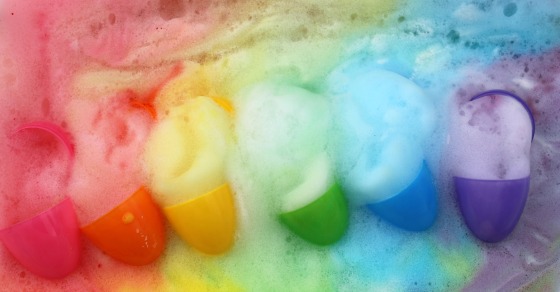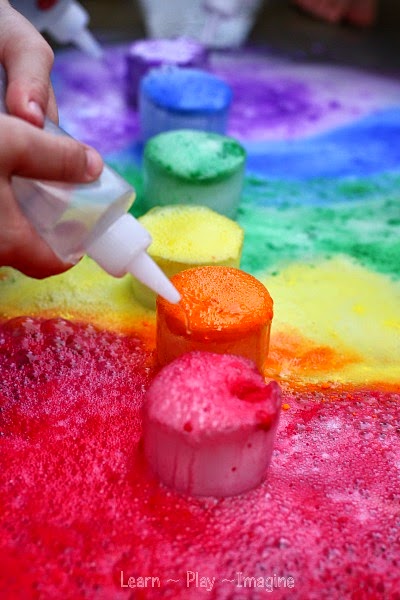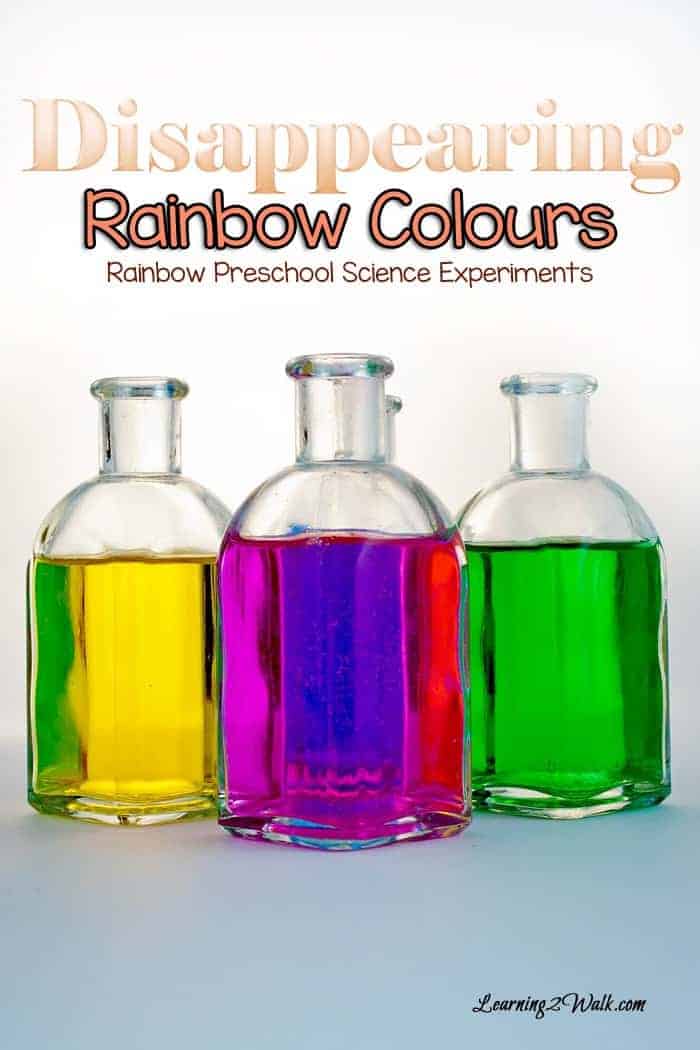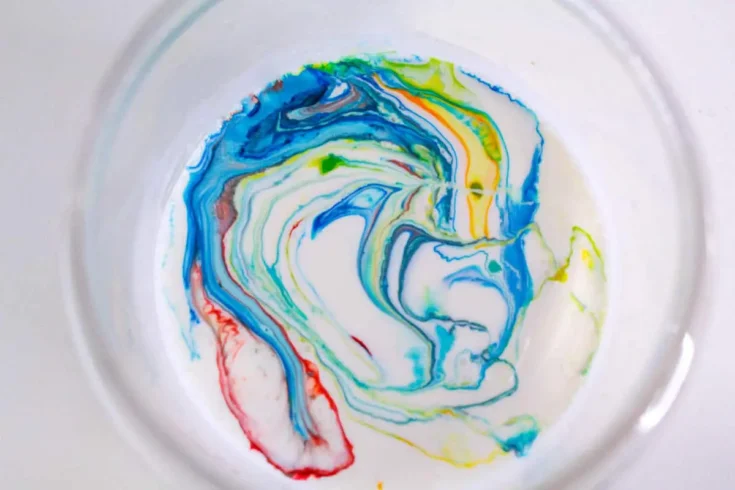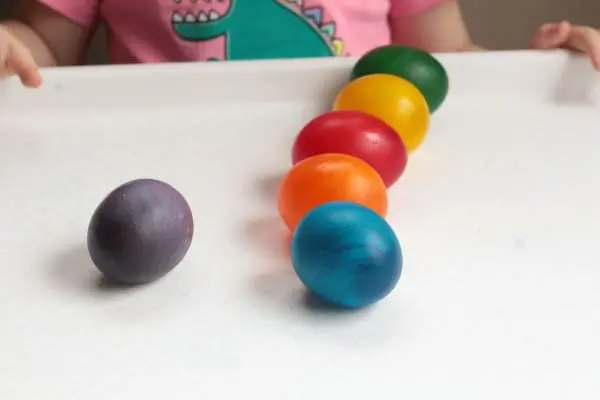Rainbow Science Experiments
Have you ever seen a rainbow in the sky and wondered how to teach your kids about the science of rainbows? Or how you can use easy rainbow science experiments in teaching kids about other science concepts? Well, now is your chance to do both in a fun way!
Here, I’ll break down what makes a rainbow so special and how you can use your child’s fascination with rainbows while teaching them some important lessons along the way! I am sure your kids will love these easy, colorful, super fun (and sometimes fizzy!) science experiments!
Check out the list of rainbow-themed science experiments below!
For more rainbow-themed activities, see my bigger list of colorful Rainbow Activities for Kids!
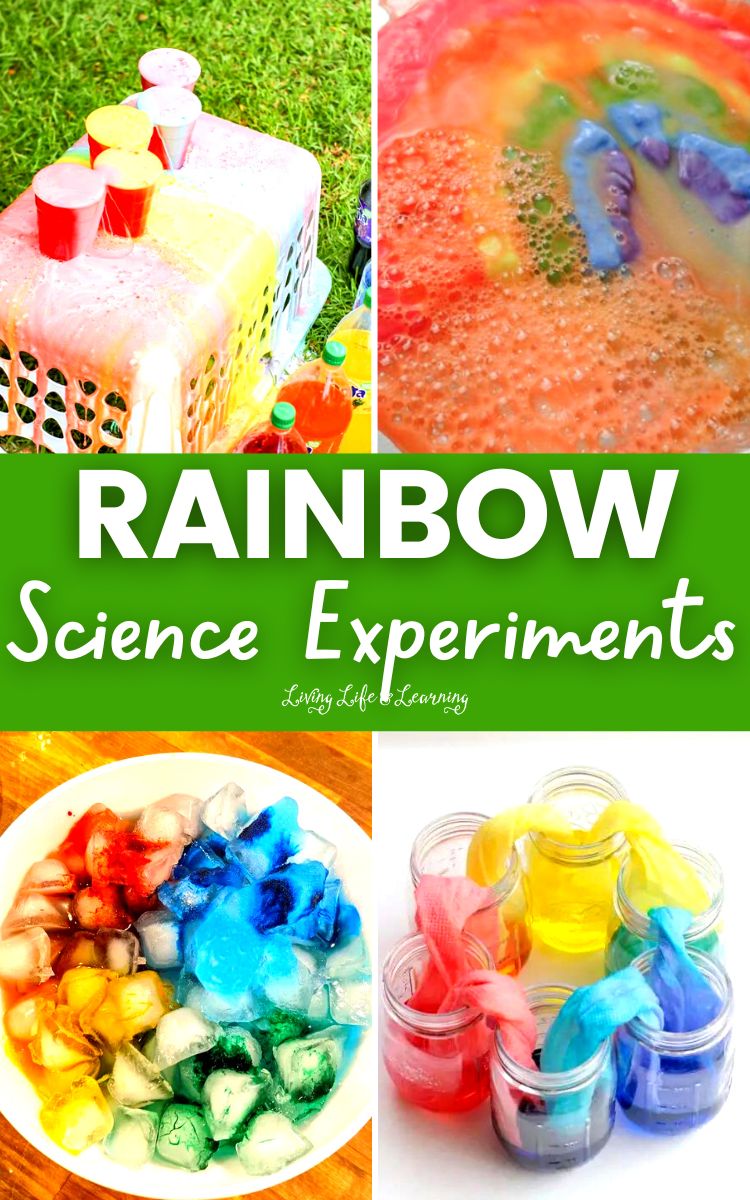
This post may contain affiliate links meaning I get commissions for purchases made through links in this post. Read my disclosure policy here.
What Causes Rainbows?
Rainbows are created when the sun’s light shines on water droplets in the air. The sun’s rays are broken up into different colors as they pass through the water droplets, creating a spectrum of colors.
Refraction of Light
Rainbows occur because of an optical process called refraction. Refraction happens when light passes from one medium to another, like from air to water. When light passes through a medium, its speed changes and it bends inwards towards the normal line (the line drawn perpendicular to the surface). This bending causes the colors of the rainbow to appear as individual bands of color.
Light Spectrum
In order to understand how rainbows work, we need to look at the spectrum of visible light. Visible light consists of different wavelengths – red, orange, yellow, green, blue and violet. Each color has a different wavelength which makes them appear distinct from each other. When sunlight enters a raindrop it is refracted and reflected multiple times until it leaves the drop as white light which is then split into the individual colors of the spectrum before reaching our eyes.
The Angle Matters!
Rainbows are also dependent on angle. The angle between your eye and the sun needs to be just right in order for you to see a rainbow (it has to be around 42 degrees). If you try looking for a rainbow at any other angle, all you will see is white light because all seven colors will have blended together instead of separating into individual bands of color.
Don’t you just love rainbows?
Recommended Rainbow Books for Kids
KIDS LOVE COLORS! That is why grabbing these rainbow books for them is a great idea. With these books, they will learn how rainbows are formed and why everyone loves seeing them!
Rain Before RainbowsHow the Crayons Saved the RainbowThe Rainbow Beeall about RAINBOW: Encyclopedia Book for kids age 5 and upRainbow: Ready-to-Read Level 1 (Weather Ready-to-Reads)Did You Know? The Rainbow Edition
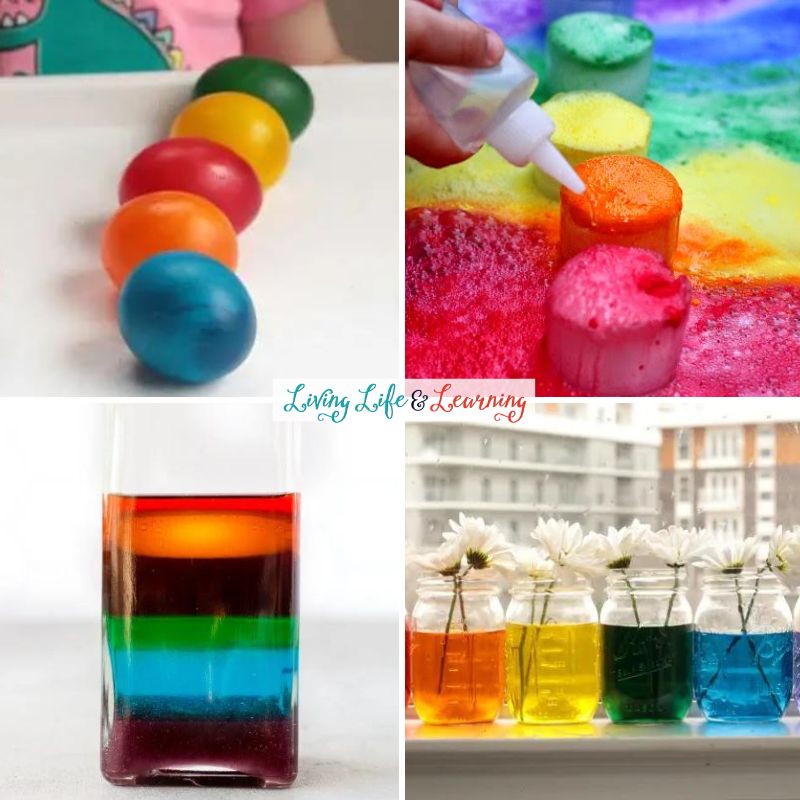
Recommended Rainbow Activity Kits
Your little one will enjoy hours of playing with this rainbow sensory tray! Grab this activity kit for a fun way to develop fine motor skills while they enjoy an educational imaginative play.
Get this rainbow-themed crafts box. Kids will love making colorful arts and crafts with this activity kit.
Rainbow Science Experiments
Grab your supplies and try these colorful rainbow science experiments with your kids! Perfect for spring or any time of the year!
Learn how to grow a crystal rainbow. This is such a fun STEM experiment for the kids. Perfect for rainbow fun paired with learning, too.
There’s nothing like an explosion to grab your kids’ attention! And the messier the better, right? This Rainbow Pop and Mentos Experiment is a classic with a twist!
This fizzy rainbow science activity fun will guarantee squeals of laughter and a great amount of fun. Watch their faces light up when they see what happens to their beautiful rainbow.
Those magical rainbow candies do more than just taste good. They make great science experiments too!
Your kids will love making this colorful rainbow slime with your kids. You can't go wrong with slimes! It's perfect for teaching about chemical reactions and measurements and how they affect the consistency of the slime.
Make colorful ice cubes with this fun and easy experiment!
If you are looking for some colorful activities for spring, this one is perfect! See what happens when you put white flowers in colored water!
This simple density activity is perfect for kids who want to see a rainbow in a jar by mixing some supplies like corn syrup and honey.
You can just get enough rainbow activities. It will always be exciting for kids, especially this walking rainbow experiment!
Discover the science behind rainbows with this prism experiment.
Watch how foam forms inside these colorful eggs! A great activity to make use of those plastic Easter eggs.
Learn about the science of freezing with this frozen rainbow eruption experiment.
Rainbow Science for Preschoolers: Disappearing Rainbow Colours
Find out how the color in a bottle/jar disappears when you put bleach on it.
Easy Magic Milk Rainbow Science Experiment for Color-Loving Kids
Be amazed to see a colorful version of this magic milk experiment.
If you have eggs, try this super fun activity and make your very own rainbow colored rubber eggs.
Rainbow science experiments are an excellent way for homeschool moms to help their kids learn about refraction while having fun at the same time.
By using basic materials such as jars, glasses, and flashlights, you can easily recreate rainbows right in your own home! So grab some supplies and get ready for some awesome rainbow science experiments today!
More Colorful Activities for Kids
Color Matching with Wooden Blocks
Color Sorting Activities for Preschoolers
How to Make Colored Rice – Alcohol or Vinegar
Perler Bead Rainbow Engineering Challenge by STEAMsational

